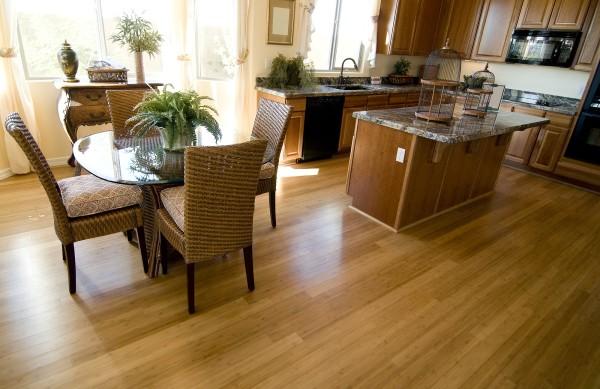How to Deep Clean Hardwood Floors


Hardwood floors are great. They are beautiful, are full of character, and offer unique flooring patterns no matter which wood you choose. They also add a ton of value to a property, provided they are in good care.
In order to take good care of your hardwood floors, you should probably deep clean them three to four times a year. Here’s how.
Remove the Loose Dirt
The first step is easy. Clean up the loose dirt and/or debris. Hardwood floors can be good at concealing loose dirt and dust, but a simple sweep goes a long way. Since you’re aiming for a deep clean, you can escalate by using your vacuum cleaner, but you want to exercise caution.
Do not use a vacuum cleaner with aggressive, moving bristles. Instead, if possible, use an attachment that has no moving parts. This will prevent you from scratching the wood or its finish.
You can also use nonchemical dusters for a finishing touch. This would be something in the vein of a microfiber cloth duster.
If you get all of the loose dirt up first, the later steps are a lot easier.
Pick a Cleaner
This is the most complicated part of the process. You need to find a hardwood floor cleaner that is right for your floors.
The good news is that you don’t have to pick your cleaner based on the type of wood you have. The less good news is that your cleaner will depend on the type of finish on your floor, and that’s not something everyone knows off the top of their heads.
For the most part, you can sort hardwood finishes into two categories: surface finishes and penetrating finishes. Let’s talk about surface finishes first.
These are finishes that leave a sealing veneer on the surface of the wood. Things like polyurethane and many different variations of urethane fall in the surface category. These finishes create a waterproof barrier on the wood, and they tend to provide a glossy or satin finish. These are also the most common finishes on modern hardwood floors.
Penetrating finishes use oils to seep deep into the wood. These finishes still provide protection against moisture, but they don’t produce a waterproof barrier on the surface of the wood. More often, penetrating finishes have a waxy type of feel to them, and they were more popular before the development of surface finishes.
The right cleaner for your floors is going to depend on the finish, so if you don’t know which applies to your floors, you can perform a simple test. Splash a small amount of water onto the wood. If the water beads up reliably, you have a good surface finish. If the water doesn’t bead up and soaks into the wood, then you have a penetrating finish.
If you have a surface finish, you can use water-based cleaners. That’s nice because there are a ton of them, and they tend to be very effective.
If you have a penetrating finish, then you will need a cleaner that is designed for the oil-based penetrating finish that applies to your wood. This might require you to look a little longer and harder for a good cleaner, but they are available.
Mop and Mop Again
Once you have a good cleaner for your floors, the next step is straightforward. Mop the floors.
When you are mopping, there are two things to remember. First, use a soft mop that won’t scratch the floors. Microfiber mop heads are ideal for this. Second, mop in the direction of the boards. This will minimize visible streaking, especially if you have a surface finish.
Since you’re deep cleaning, you might find that a single mopping session isn’t good enough. This is the kind of deep cleaning you don’t do every day, so it’s fine to mop the floors a few times in a row. But make sure the floors dry between each mopping session. Even with a finish and the right cleaner, if you overexpose the wood to moisture, it can create problems.
Ultimately, you’re going to mop until you’re satisfied, but don’t try to buff out stains with your mop. That’s the next step.
Attack the Stains
The last part of your deep clean is removing stains. For this, you want to get a spot remover, and once again, the type of remover you pick will depend on the finish on your floors. You can read hardwood spot remover labels, and you’ll find options for either type of finish.
Follow the directions on your spot remover. They have different processes depending on their design. Ultimately, spot removers can tackle oil stains, stains from all kinds of food and drink spills, and most of the types of stains you’re likely to see on a hardware floor.
When you’re done with the stain removal process, you’re done with your deep cleaning.
Consider Professional Help
If the process above sounds like a lot of work, you always have another option. You can call Zeppelin and schedule a professional cleaning service. We’ll take care of those floors for you, and when we’re done, you’ll have pristine hardwood floors. Contact us today to schedule your appointment.
